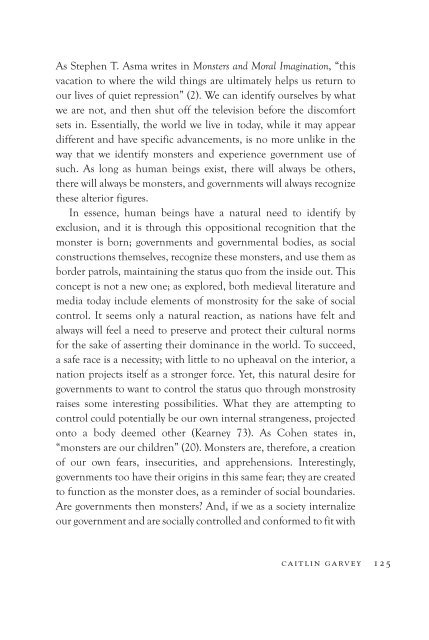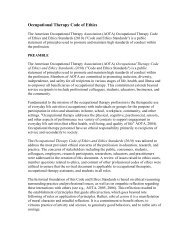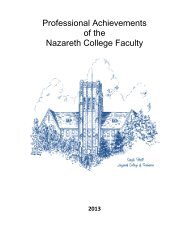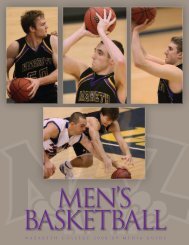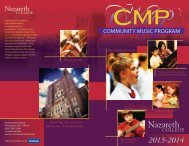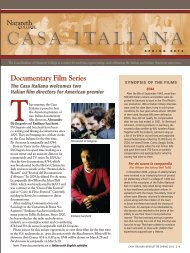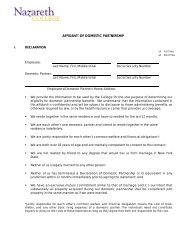Afternoon of Alterity - Nazareth College
Afternoon of Alterity - Nazareth College
Afternoon of Alterity - Nazareth College
You also want an ePaper? Increase the reach of your titles
YUMPU automatically turns print PDFs into web optimized ePapers that Google loves.
As Stephen T. Asma writes in Monsters and Moral Imagination, “thisvacation to where the wild things are ultimately helps us return toour lives <strong>of</strong> quiet repression” (2). We can identify ourselves by whatwe are not, and then shut <strong>of</strong>f the television before the discomfortsets in. Essentially, the world we live in today, while it may appeardifferent and have specific advancements, is no more unlike in theway that we identify monsters and experience government use <strong>of</strong>such. As long as human beings exist, there will always be others,there will always be monsters, and governments will always recognizethese alterior figures.In essence, human beings have a natural need to identify byexclusion, and it is through this oppositional recognition that themonster is born; governments and governmental bodies, as socialconstructions themselves, recognize these monsters, and use them asborder patrols, maintaining the status quo from the inside out. Thisconcept is not a new one; as explored, both medieval literature andmedia today include elements <strong>of</strong> monstrosity for the sake <strong>of</strong> socialcontrol. It seems only a natural reaction, as nations have felt andalways will feel a need to preserve and protect their cultural normsfor the sake <strong>of</strong> asserting their dominance in the world. To succeed,a safe race is a necessity; with little to no upheaval on the interior, anation projects itself as a stronger force. Yet, this natural desire forgovernments to want to control the status quo through monstrosityraises some interesting possibilities. What they are attempting tocontrol could potentially be our own internal strangeness, projectedonto a body deemed other (Kearney 73). As Cohen states in,“monsters are our children” (20). Monsters are, therefore, a creation<strong>of</strong> our own fears, insecurities, and apprehensions. Interestingly,governments too have their origins in this same fear; they are createdto function as the monster does, as a reminder <strong>of</strong> social boundaries.Are governments then monsters? And, if we as a society internalizeour government and are socially controlled and conformed to fit withcaitlin garvey 125


